The Pragnell Bray Origins Clock
In March 2022, in Geneva, Charlie Pragnell and Bob Bray devised a plan. Each of them leads a family business with international recognition and is deeply involved in cutting-edge horology. They discovered a shared fascination with John Harrison, the renowned creator of the H1 Marine Chronometer. Together, they began envisioning an ambitious tribute to the achievements of this British horologist, who profoundly influenced the course of history.
The inner workings of the H1 are incredibly complex and closely guarded, posing a challenge that has puzzled horologists for decades. Over the past 280 years, only three individuals have been capable of creating a full-scale replica of the H1, highlighting the significance of this accomplishment.
.jpg)
The Birth of an Idea
Conceived in Switzerland, created in Great Britain
Designs were quickly drafted for an H1 clock that would be suspended from the ceiling on a gimbal. After an initial consultation with Paddy Rodgers, the Director of the National Maritime Museum, and Emily Akkerman, the Curator of Time at the Royal Museums Greenwich (where the original H1 is exhibited), along with a visit to the esteemed Prince Philip Maritime Collection Centre, Charlie came up with an idea.
He envisioned the clock resting on a pivoting platform, swung by a large pendulum, mimicking the rocking motion of the sea (Figure 1.0). Within 24 hours, the design began to take shape. The pendulum evolved into a more intricate, three-dimensional form resembling the front of a ship's hull (Figure 2.0). It was to be modelled directly after the hull of the HMS Centurion, the Royal Navy ship which carried John Harrison as he trialled his first marine timekeeper, 'H1'. The next phase involved frame-mounting the entire assembly atop a table, complete with pineapple finials, in keeping with the British tradition of subtle humour and eccentricity (Figure 3.0).
Draft designs by Charlie Pragnell, 15-16th November 2022
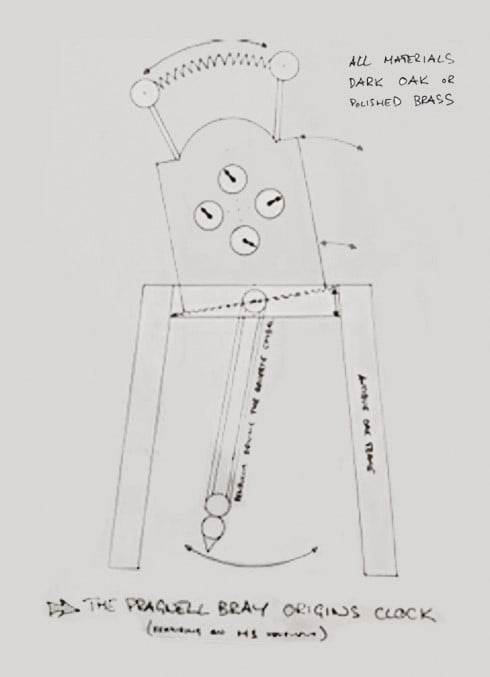
1.0 Concept sketch
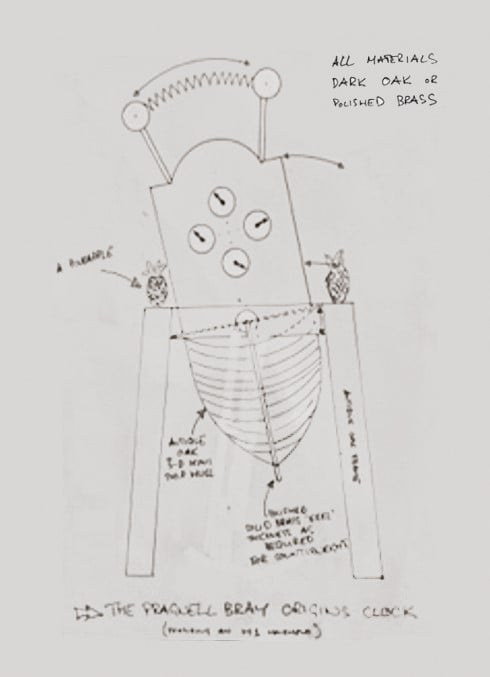
2.0 Addition of the hull in place of a pendulum
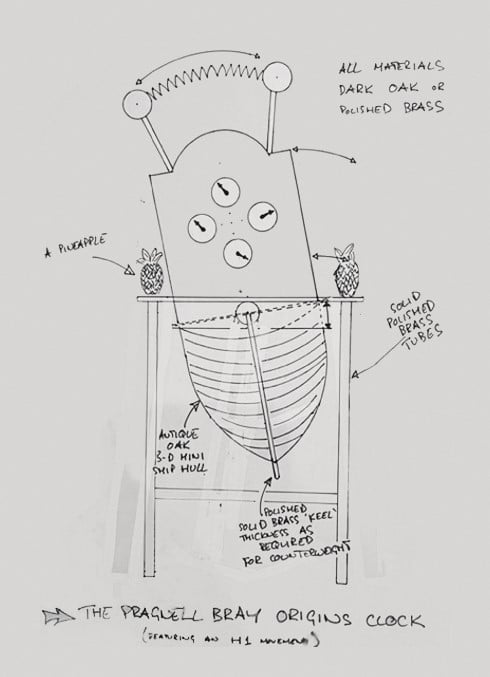
3.0 Refinements to the frame and detailing
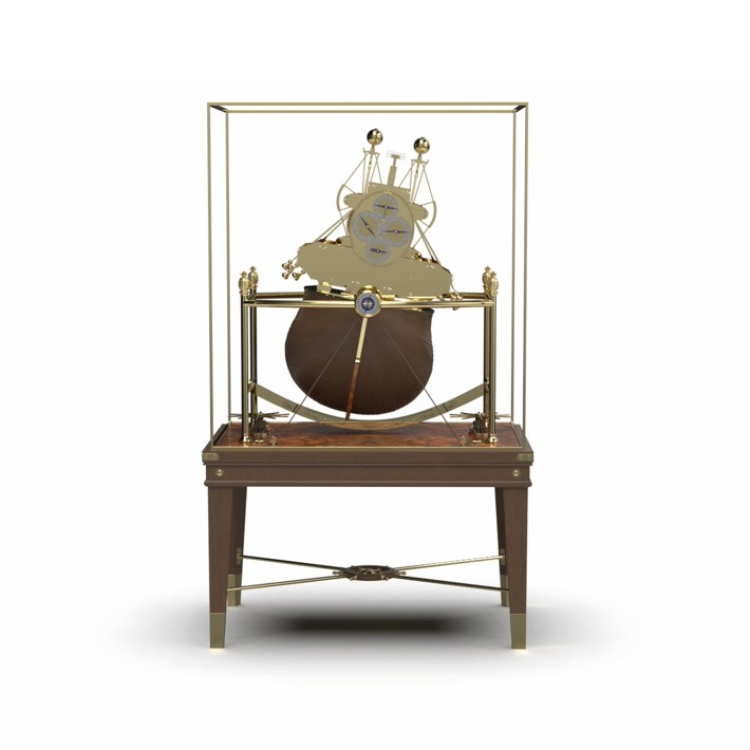
Once the drafting was complete, it was up to David Watt, Pragnell Master Goldsmith with 40 years of experience and an exceptionally skilled CAD (Computer-Aided Design) controller, to bring the concept to life. The original design’s timber and ropes were replaced with a sleek brass frame featuring tubular rails. David then revised the table by widening it and adding a brass cross brace adorned with a ship’s wheel, a glass dust cover, and, in line with the nautical theme, two ship’s capstans.
As a final touch, he incorporated two nautical instruments: an inclinometer, which measures a vessel’s tilt as it navigates the waves, and a compass mounted on the central pivot, designed to move with the rocking motion as if guiding the ship at sea. Gradually, additional decorative details and flourishes emerged, and the design continued to evolve as it moved into production.
Sea Trials
Evolving The Design
The inclinometer has been relocated from the keel (1) to the ship’s prow (2) at the pivot point of the central supporting column. It now takes the form of a beautifully crafted antique gauge engraved with classical deities blowing winds from their mouths. The gauge features an index displaying ‘calm,’ ‘swell,’ and ‘stormy’ seas based on the degree of tilt. Previously, this position was intended for a compass, but Bob pointed out that compasses are meant to lie flat. Therefore, the compass has been repositioned horizontally beneath the structure at the junction of the supporting cross-braces (3).
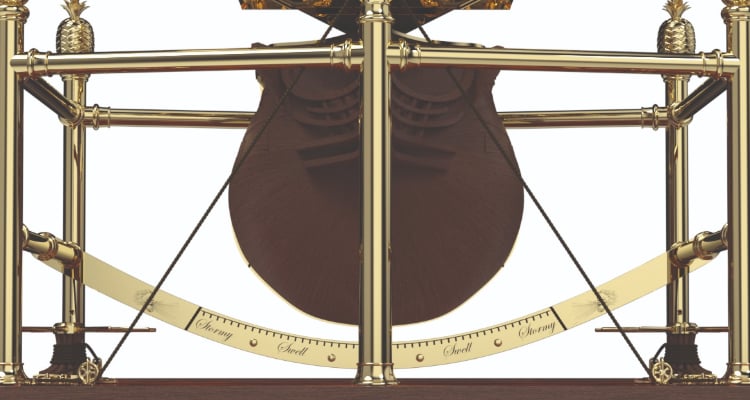
1. The Inclinometer cross bar shown under the hull of HMS Centurion
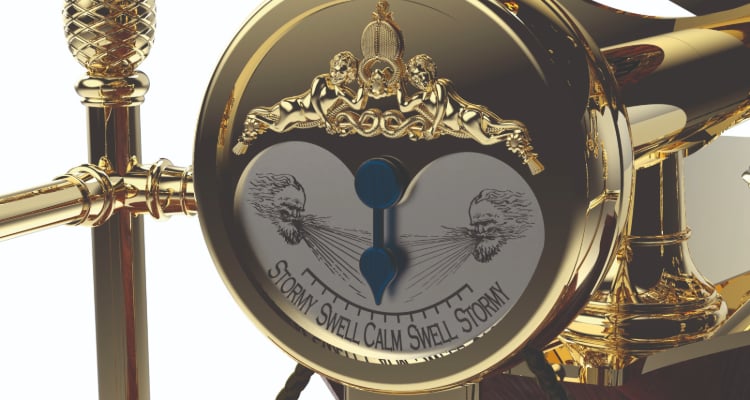
2. New position of the inclinometer, featuring spandrels modelled from the face of the H1
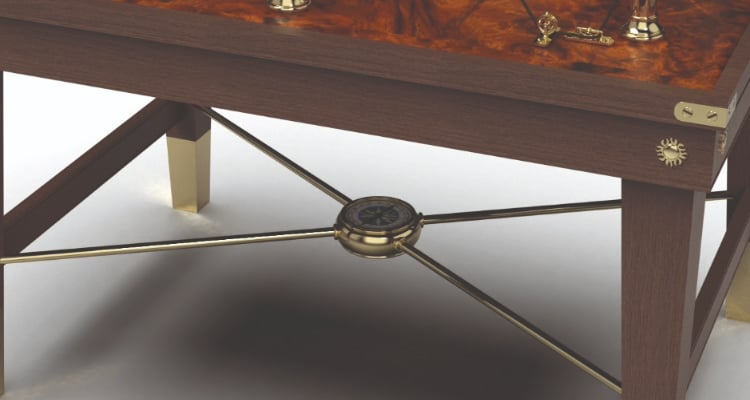
3. The compass mounted at the meeting point of the supporting cross-braces
On the tabletop flanking the hull, the polished capstans have been refined and repositioned to direct the cord for the winding system (4). Meanwhile, a ship’s wheel has moved from beneath the table to the rear pivot, ensuring it mirrors the inclinometer (5).
The table supporting the assembly is inspired by period details, featuring brass corner brackets from the large trunks used by travellers in Harrison’s time, sun-shaped studs that evoke the theme of historical navigation, and a tabletop veneer carefully selected to reflect the parting waters around the HMS Centurion (6).
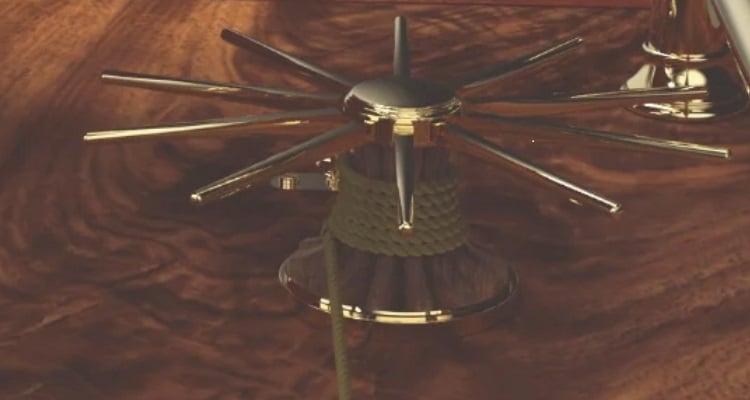
4. A polished capstan used to wind the Pragnell Bray Origins Clock
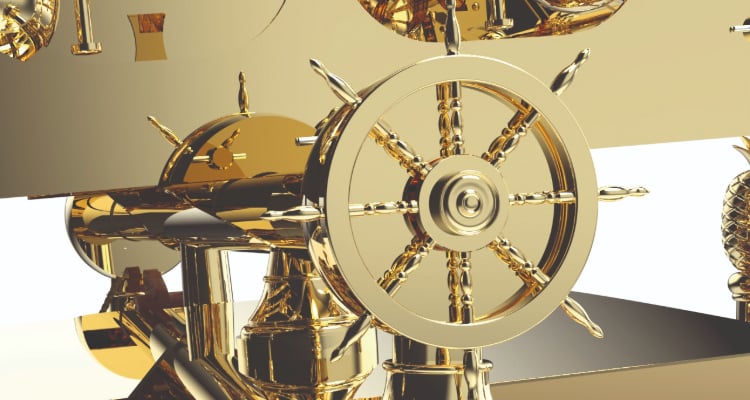
5. The ship's helm rocks, mirroring the inclinometer
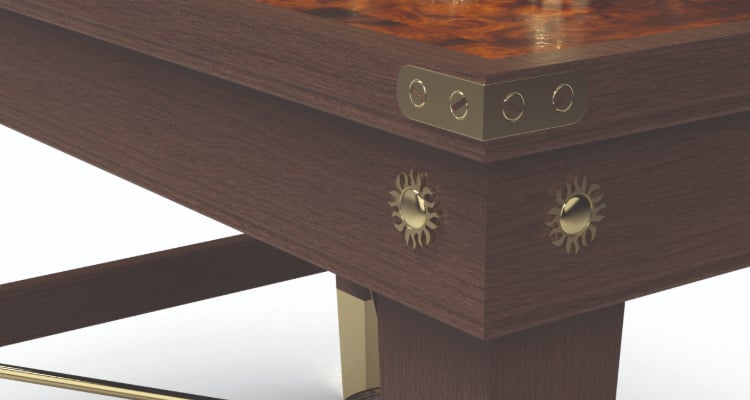
6. Brass trunk corner brackets and sun detailing

Dropping Anchor
The Final Flourish
Before setting sail, Charlie made a final request. He asked for the compass cross-brace under the table to be removed and replaced with an anchor. In a remarkable display of craftsmanship and engineering, the anchor would hang through the table, acting as a counterweight and gently rocking with the motion of the boat.
Revealing The Secrets Of Time
The H1 Conundrum
In traditional clockmaking, design typically starts with the wheel train and moves outward: mechanics first, then aesthetics. However, the Pragnell Bray Origins Clock required the opposite approach. Working within Harrison's intricate design constraints, Bob had to reverse-engineer the mechanism completely, most of which is nearly invisible. He relied on detective work, hypotheses, experimentation, and sheer ingenuity to tackle this challenge.
Although the clock is on display at the Royal Observatory in Greenwich, even a horologist of Bob's calibre engaged in a project to gain a deeper understanding of the H1 than anyone since Harrison himself had no special access. Like any other visitor, he could only observe it behind glass, alongside school groups and tourists. Gradually, however, he began to build a clearer picture of the clock's mechanics by scouring historical documents, meticulously examining imagery and literature, and cross-referencing these sources with his observations and sketches.
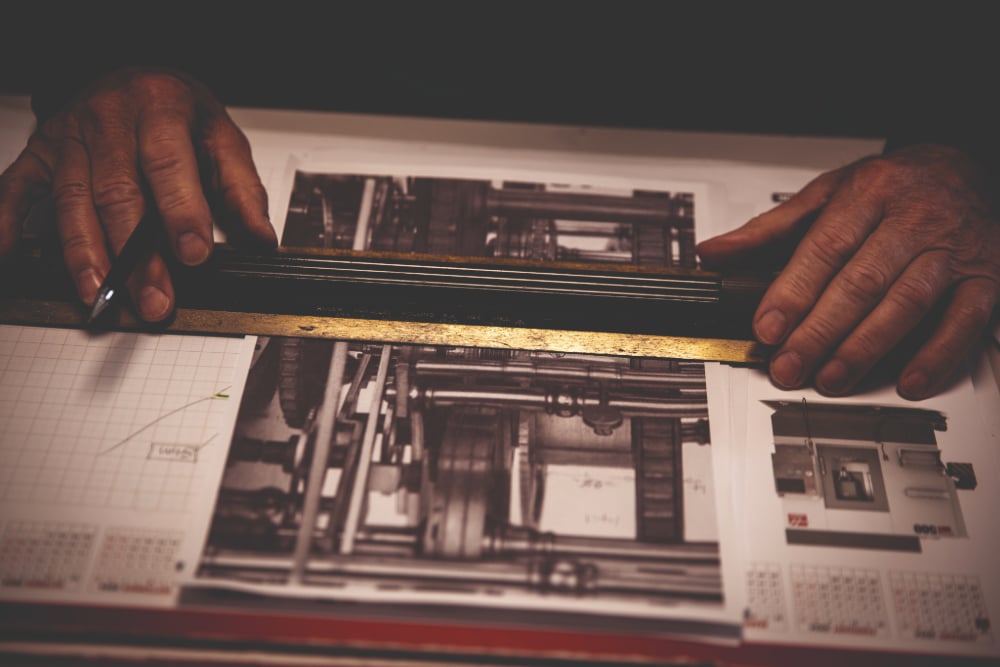
This involved determining the precise dimensions and geometries of over 1,500 parts and their physical mass and positioning. The H1 contains numerous components that overlap and interact with one another, including weighted elements that must be delicately balanced. For example, counterbalances of various sizes are attached to arms that support anti-friction devices, some of which traverse diagonally through intricate movement mechanisms. All of these elements must be uniquely configured to prevent obstructions or collisions.
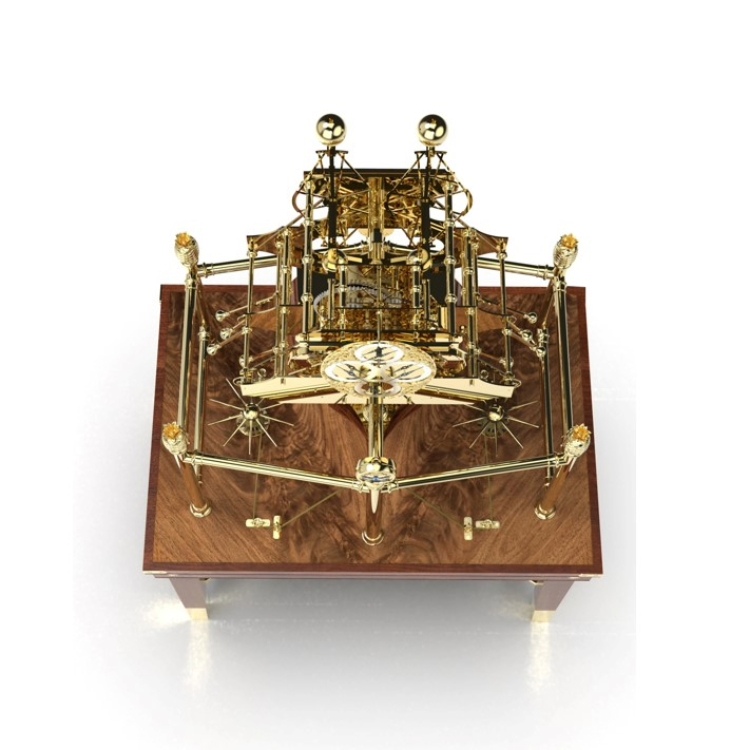
Recreating the H1 is an enormous task that, to be done faithfully, relies on Bob's decades of experience and exceptional ability to delve into Harrison's mind, which has remained elusive for nearly 300 years. Bob pieced together fragments of information into a complex series of components that work in harmony to ensure stable timekeeping in stormy seas. This clock represents more than just the impressive swan song of Bob, one of the greatest clockmakers of the 21st century; it marks a significant milestone in horological history. It revitalises Harrison's legacy for the modern era and showcases the mastery of British clockmaking. The H1 movement is the origin of watchmaking.
Find out more about John Harrison and the H1 Marine Chronometer.
Watch CLP Page